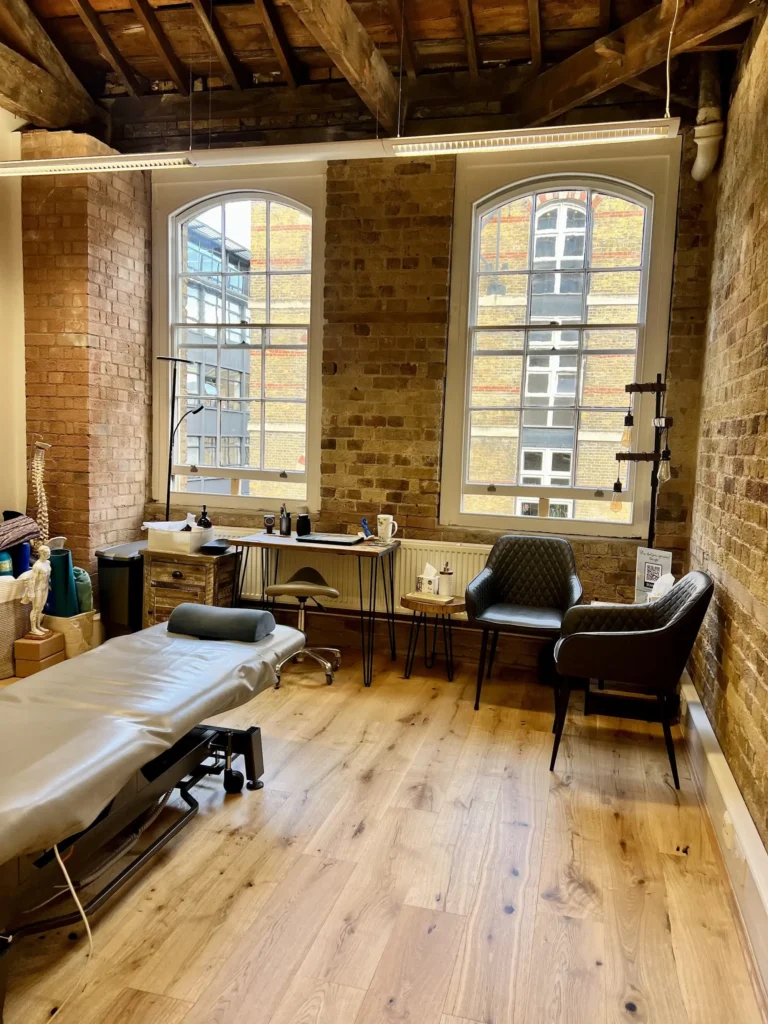Hip Pain
Conditions
Hip Pain
Hip pain refers to discomfort in or around the hip joint. Causes include arthritis, bursitis, tendinitis, hip fractures, and muscle or tendon strain. Hip pain can affect mobility and quality of life.
Standard Medical Approach:
- Diagnosis: Physical exams, imaging tests like X-rays or MRIs.
- Treatment: Pain relievers, anti-inflammatories, physiotherapy, injections, and sometimes surgery.

Hito Holistic Approach
- Diagnosis: Comprehensive assessment including physical, neurological, myofascial, visceral, postural, energetical, emotional, and lifestyle factors.
- Treatment: Beyond the standard orthopaedic approach which should be applied in any physiotherapy clinic, we look at the hip also from other perspective. For example, viscerally the right is connected to the caecum which is the first part of the large intestine while the left one to the sigma which is the last part of the large intestine before the rectum. Therefore, suffering with these organs like when having irritable bowl, constipation, diverticulitis, malabsorption etc can affect one hip or the other. Moreover, the front hip it is also strongly related to the muscles psoas and iliacus which are hip flexors and part of the deep frontal line which is the deepest and most ancestral (limbic system or lizard brain) line muscle in the body. This is the line which is always tensing when we are in fight or flight. So being under pressure and stress all the time overall in case of a demanding job or a certain family situation can tense this line and created internal hip compression, pain, sandy or rubbing noises and on the long-term osteoarthritis. Deeply the hip connects with the deep hip internal or external rotators and other muscles like the gluteus and the piriformis, emotionally connected with the load of responsibilities and the feeling to be in charge, and often giving posterior hip pain or sacroiliac problems, lower back pain or buttock pain. Externally the hip is connected to the ITB/TFL muscles which are viscerally related to the colon on each side. Again, conditions of the colon (large intestine) can make these muscles very tight. In Chinese medicine the external hip and ITB corresponds to the gallbladder meridian (overthinking with anger and frustration, shock) while the groin to the stomach, liver and spleen (solar plexus meridians), the adductors to the liver, kidney and spleen, the posterior hip to the bladder meridian. In the ayurvedic medicine the hip mostly relates to the base chakra (family, roots, survival instinct or status, grounding, bones and bone marrow) which is also corresponding to the pubic bone and the coccyx. The first important treatment comes from the myofascial therapies with the goal to “melt” any tension in the hip muscles however being the hip so deep as joint, often the best results come from prolonged and global stretches of all the hip muscles. Myofascial induction therapy can manually remove any tightness in psoas, iliacus, gluteus, adductors and ITB/TFL. Mobilisations with tractions typical of Mulligan method can realign and recentre the hip joint. Visceral treatments can address the connections with the large intestine or internal/external scars from previous abdominal surgeries. The acupuncture and energy healing can resolve the energy imbalances in the meridians, organs and chakras. Hip mobility, flexibility and strengthening exercises can improve the range of motion and strength. Mindful strategies can help to resolve related traumas, calm the mind and bring relaxation mental and physical relaxation.
